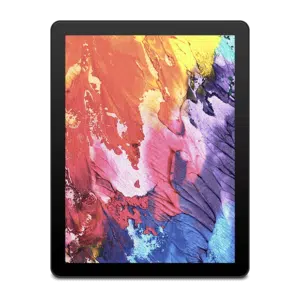Electronic Paper Displays in Education and Beyond
Electronic Paper Displays in Education and Beyond
Blog Article
Display technology is now an integral part of our daily lives, showing in from smartphones and e-readers to large-scale marketing panels. One of the varied selection of large E ink display, OLED (Organic Light-Emitting Diodes), and LED (Light-Emitting Diodes) have surfaced as some of the very most commonly discussed options. While each type provides a unique distinctive function, their differences in features, effectiveness, and use instances cause them to become suited to unique applications. Let's take a closer consider the essential traits of these display technologies.
Electronic Paper displays (ePaper)
Electronic Paper displays, also referred to as ePaper or Electronic Ink displays, are created to simulate the look and readability of traditional Ink on paper. That engineering employs small microcapsules comprising charged dark and bright contaminants stopped in a clear fluid. When an electrical subject is used, the particles move to either side of the pill, making a visible image. The image stays fixed till another electric subject is used, which makes it perfect for presenting text-based content such as for example books, newspapers, and e-readers.

One of many major features of ePaper displays is their low power consumption. Unlike conventional LCD
Knowledge Electronic Paper displays
An electronic Paper display (ePaper) mimics the look of Ink on paper. Unlike conventional monitors, ePaper depends on its ability to reveal surrounding light rather than emitting their own. This technology not merely decreases eye stress but also offers unmatched readability in sunlight, rendering it suitable for e-readers and digital signage solutions.
One standout feature of ePaper displays is their incredibly minimal energy consumption. Since they only use power when changing content, ePaper screens are extremely successful and suited to battery-powered devices. Nevertheless, their renew prices are slower compared to OLED and LED displays, restraining their applicability to static or minimally dynamic content.
OLED displays
OLED displays are noted for their beautiful aesthetic quality, giving vibrant colors, deep blacks, and excellent contrast. Each pixel in an OLED display emits its own mild, removing the need for a backlight. That not merely permits thinner, more light models but additionally results in better power efficiency compared to LED in certain scenarios.
One important advantageous asset of OLED displays is their flexibility. They could be manufactured in bent or foldable patterns, creating them common in cutting-edge smartphones and wearable devices. Nevertheless, OLED monitors have challenges, such as for instance susceptibility to burn-in and smaller lifespans compared to other technologies.
LED displays
LED displays, the most typical of the three, rely on a backlit process to mild their pixels. While not as successfully striking as OLED E ink signage, LEDs are highly tough, long-lasting, and cost-effective. These features cause them to become suitable for a broader array of applications, including TVs, pc monitors, and outdoor advertising.
LED displays on average conduct effectively in terms of illumination, creating them a great choice for settings with large ambient light. But, they fall short in achieving the same strong distinction and shade reliability as OLED technology.

Ultimate Contrast
When choosing between ePaper, OLED, and LED displays, the choice depends mainly on the intended purpose. For static content like studying or signage, ePaper excels with its minimal power application and high awareness in organic light. OLED shines in programs wherever lively shades and flexibility are paramount. Meanwhile, LED remains a dependable and cost-efficient solution for many different general-purpose needs.
Each display technology brings anything special to the table, ensuring that there's a perfect choice for every situation. Knowledge these variations might help people and companies produce educated choices that suit their specific display requirements. Report this page